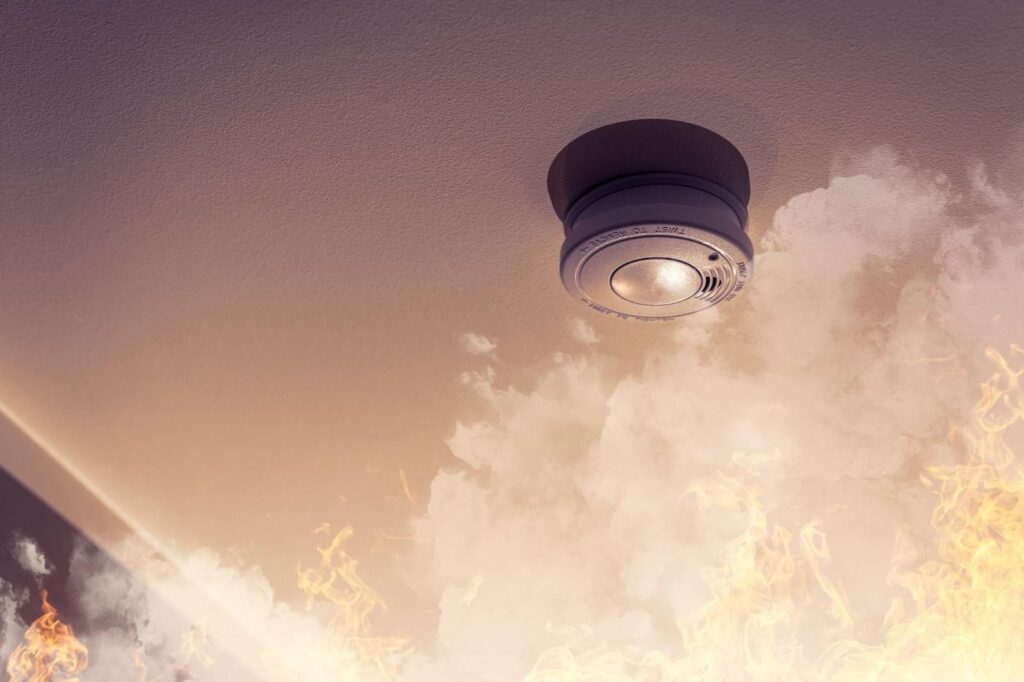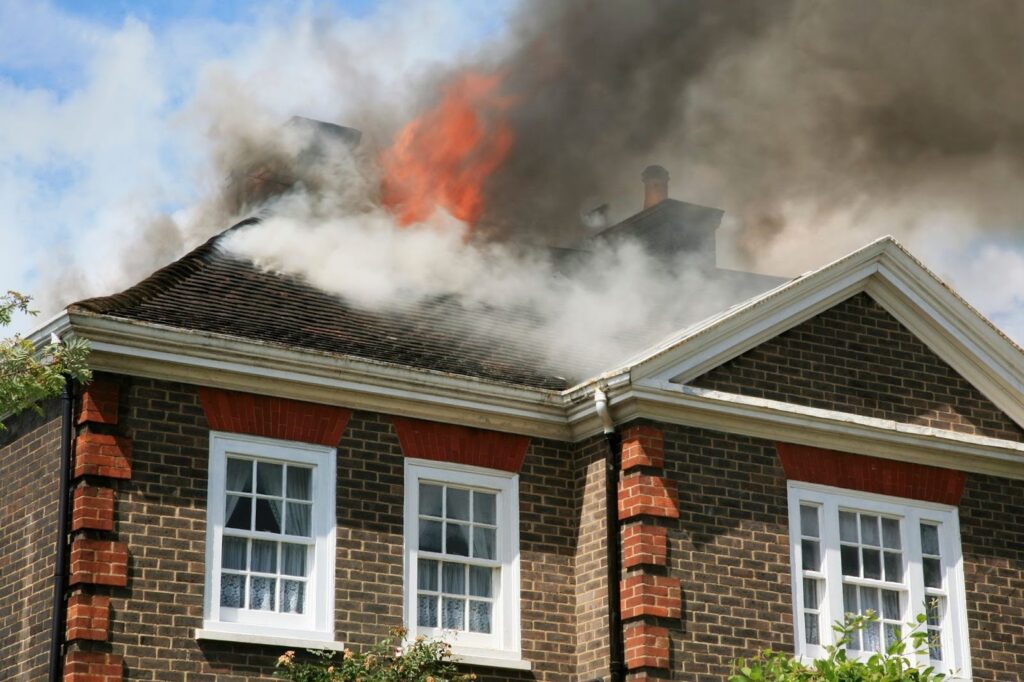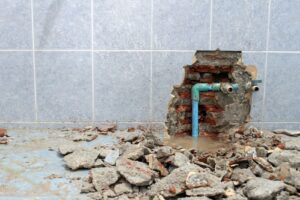Fire prevention in homes helps guarantee the safety and well-being of families and prevents fire damage. Each year, residential fires cause significant property damage and pose serious risks to personal safety.
The best way to prevent fire damage is understanding how to minimize fire risks. Fire damage is devastating, both physically and emotionally. The emotional toll impacts families long after repairs are finished.
In this blog, we will explore practical and effective strategies for fire prevention, including understanding fire risks, essential safety practices, and steps to take to minimize the potential for fire damage. We will also discuss the importance of being prepared with a fire emergency plan and the essentials of fire damage restoration.
Understanding fire risks in your home
The first step in preventing fire damage is being aware of fire causes and fire risks.
Electrical issues are one leading cause; these can stem from overloaded circuits, faulty wiring, or malfunctioning appliances. Have regular electrical system inspections and be mindful of not overloading outlets.
Cooking accidents are another common source of home fires. Unattended stoves, flammable materials near heat sources, and grease build-up quickly escalate into dangerous situations. Always stay vigilant while cooking, keep the cooking area clear of combustibles, and regularly clean appliances to prevent grease fires.
Certain areas in your home are more susceptible to fire. Vulnerable areas include living rooms with heating devices, bedrooms with unattended candles or overloaded electrical outlets, and garages where flammable materials are often stored.
Understanding and mitigating these risks reduces the likelihood of fire in your home. It’s not about the immediate threat to property and safety; fire damage has long-lasting impacts on your home’s structure and your family’s sense of security.
Essential fire prevention strategies
Home fire prevention protects the safety of your family and property. Implementing effective strategies will reduce the risk of fire, particularly in high-risk areas like the kitchen and where you use electrical appliances.
Safe cooking practices
To prevent kitchen fires, never leave your stove unattended while in use. Keep flammable items like towels and paper products away from the stove. Regularly clean your cooking appliances to prevent grease buildup, as it may ignite a fire.
Additionally, always have a fire extinguisher accessible in the kitchen for immediate response in case of a fire.
Electrical safety and maintenance
You can prevent electrical fires by following a few key guidelines.
- Avoid overloading electrical outlets and use surge protectors where necessary.
- Regularly inspect cords and plugs for damage and replace them if frayed or worn.
- Be cautious with space heaters and other portable heating devices. Keep them away from flammable materials, and turn them off when not in use.
Heating system maintenance
Regular inspections and maintenance of your home’s heating system are vital for fire prevention. Have your heating system professionally inspected and cleaned annually to prevent fire hazards. The inspection should include looking at furnaces, boilers, and chimneys. Keep any flammable materials at a safe distance away from heating sources.
Incorporating these fire prevention strategies into your daily routine reduces the fire risk in your home. Remember, the key to effective fire prevention is awareness and proactive measures. By understanding the common causes of fires and taking steps to mitigate these risks, you protect your home and loved ones from the devastating effects of fire damage.

Installing and maintaining fire safety equipment
Installing and maintaining fire safety equipment aids fire prevention in any home. Fire safety equipment includes smoke detectors, fire extinguishers, and fire sprinkler systems. Each plays a vital role in the early detection and suppression of fires, potentially saving lives and minimizing fire damage.
Smoke detectors
Smoke detectors are your first line of defense against fires. Install them on every level of your home, including the basement and near all sleeping areas. Test them monthly to ensure they are working correctly, and replace the batteries at least once a year.
Replace your smoke detectors every 10 years to maintain their effectiveness. A functioning smoke detector alerts you to a fire in its early stages. This gives you crucial time to evacuate and call for help.
Fire extinguishers
Having the correct type of fire extinguisher in your home is essential. There are different classes of fire extinguishers designed for various types of fires, including those involving ordinary combustibles, flammable liquids, and electrical equipment.
Familiarize yourself with the operation of your fire extinguisher. Remember the acronym PASS: Pull the pin, Aim low, Squeeze the lever, and Sweep the nozzle side to side. Keep extinguishers in easily accessible locations, particularly in the kitchen and garage.
Fire sprinkler systems
For comprehensive home fire suppression, consider installing a fire sprinkler system. These systems detect heat from a fire and automatically activate to suppress the fire quickly and effectively. While more common in commercial buildings, residential fire sprinkler systems are becoming increasingly popular as an added layer of protection.
Regular maintenance and basic knowledge of these tools will help protect your home and family from the dangers of fire. Installing and properly maintaining these systems enhances your home’s fire prevention capabilities.
Creating a fire emergency plan
Having a well-thought-out fire emergency plan helps ensure your family’s safety in the event of a fire. A comprehensive plan prepares everyone for a quick and safe evacuation and helps reduce panic and confusion during an emergency.
Developing a fire escape plan
When creating a fire escape plan, start by walking through your home and identifying all possible exits, including windows and doors. Ensure each family member understands at least two ways to escape from every room, especially bedrooms.
If you have children, draw a floor plan of your home and mark the escape routes, making it easier for them to understand. For homes with multiple floors, consider investing in escape ladders for upper-level rooms.
Regular fire drills
Practice makes perfect. Conduct regular fire drills with your family at least twice a year. These drills should include practicing the escape routes, touching doors to check for heat before opening, and crawling low to avoid smoke. Make sure everyone understands the importance of getting out quickly and not stopping to gather belongings.
Emergency contacts and meeting point
Ensure all family members know how to call 911 or your local emergency number. Designate a safe meeting point outside your home, such as a neighbor’s house, a streetlight, or a mailbox, where everyone will gather after escaping. Having a meeting place will help you quickly account for all family members so you can inform the fire department if anyone is missing.
Creating and practicing a fire emergency plan is vital in fire prevention and safety. It means that in the event of a fire, your family knows exactly what to do and where to go. This increases the chances of a safe evacuation.

Post-fire recovery and restoration
Recovering from a fire incident is overwhelming, but knowing the immediate steps to take and understanding the process of fire damage restoration helps make the journey smoother and more manageable.
Immediate steps after a fire
Safety is the primary concern immediately following a fire. Do not re-enter your home until fire officials declare it safe.
Once allowed, document the extent of the damage by taking photos and making a list of damaged items. You will need this for insurance claims. Contact your insurance company as soon as possible to start the claims process.
Securing your property is important to prevent further damage or theft. Doing this may involve boarding up windows and doors.
Understanding fire damage restoration
Fire damage restoration is a multi-step process that involves more than repairing areas affected by flames. It includes water damage repair from firefighting efforts, smoke and soot removal, and odor elimination.
Professional restoration services have the expertise and equipment to handle these complex tasks effectively. They will assess the damage, provide a restoration plan, and work to restore your property to its pre-fire condition.
The goal of fire damage restoration is not only to repair but also to restore your home to a safe, welcoming state. This process involves structural repairs, cleaning and sanitizing, and even reconstruction of severely damaged areas.
The best professional restoration services will understand the emotional and physical impact of fire damage and work diligently to help you return to a sense of normalcy. While the aftermath of a fire is often distressing, effective fire damage restoration aids in the recovery process and helps you and your family move forward.
Got fire damage? Call Utah Disaster Clean Up & Restoration
Proactive measures minimize fire risks in your home. Staying informed and prepared makes all the difference in preventing a fire or effectively responding to one. Regularly practicing fire safety habits, maintaining fire prevention equipment, and having a solid emergency plan are essential to safeguarding your home and loved ones.
If you ever face the unfortunate event of a fire or smoke damage, remember that Utah Disaster Clean Up & Restoration is here to help. Our team of experts specializes in restoring homes affected by fire damage, water damage, or mold. With 20 years of experience, we’ve got the expertise you need to bounce back after a fire.
Don’t hesitate! Contact Utah Disaster Clean Up & Restoration to restore your home.



